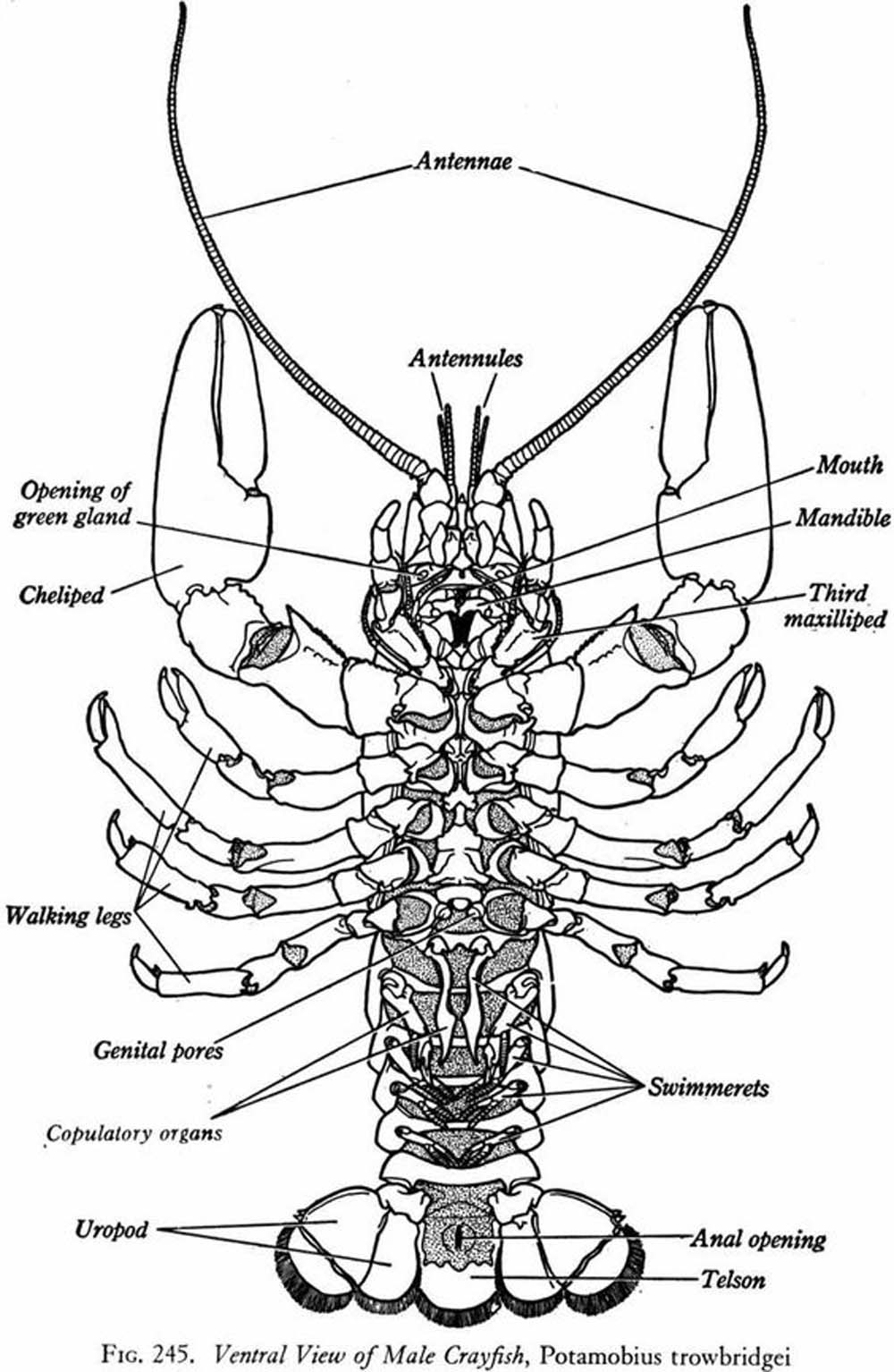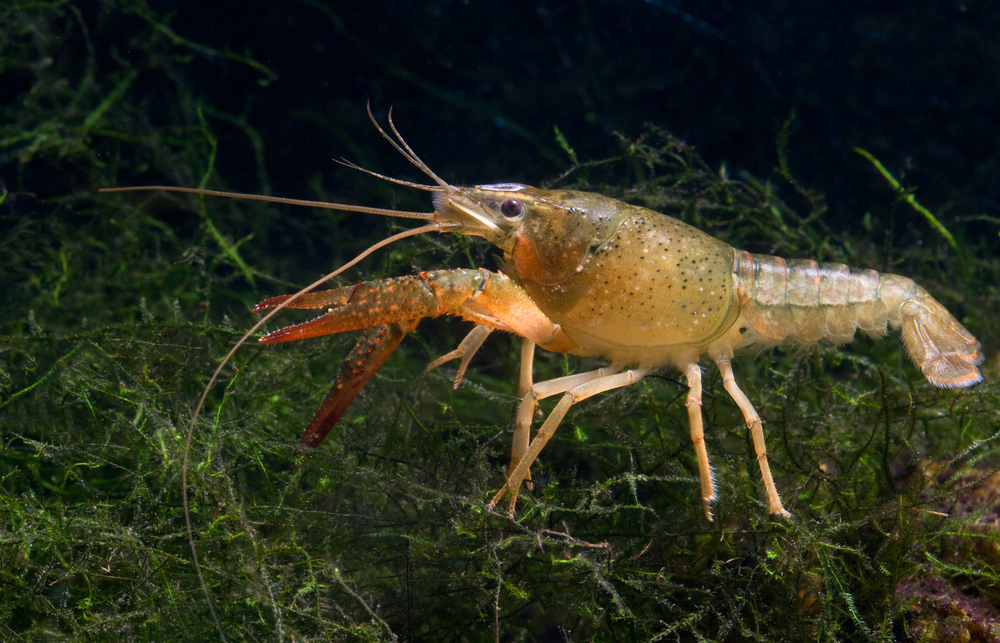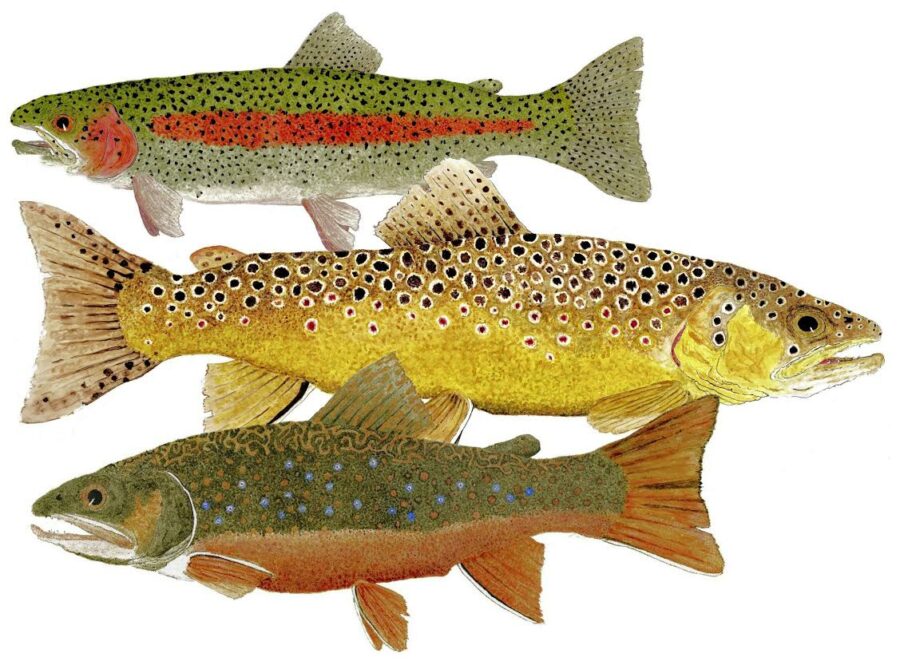
Crayfish illustration by Home School Biology Junction.
The Nancy P is not an easy tie, but it is well worth the effort and patience required. The devil is in the details
In the video below, the fly Kelly ties is a crayfish dubbed The Nancy P, an articulated pattern he invented.

Skip Clement, New Zealand.
By Skip Clement
Galloup says the fly has successfully and repeatedly caught trout, big trout, in crayfish-less water and crayfish-populated waters. Always with unmistakable takes and eats. And it does not matter whether you’re in New Zealand, Sweden, Utah, or Alaska, The Nancy P crayfish will get a bite, but there are very particular details that tyers need to heed.
NOTE 1:
Crayfish [Cambarus sp. U. S. and Canada and worldwide generically referred to as a group of decapod crustaceans] are freshwater crustaceans resembling small lobsters (to which they are related). In some locations, crawfish, craydids, crawdaddies, crawdads, freshwater lobsters, mountain lobsters, rock lobsters, mudbugs, or yabbies. — Wikipedia
Taxonomically, they are members of the superfamilies Astacoidea and Parastacoidea. They breathe through feather-like gills. Some species are found in brooks and streams, where freshwater is running, while others thrive in swamps, ditches, and paddy fields. Most crayfish cannot tolerate polluted water, although some species, such as Procambarus clarkii, are hardier. Crayfish feed on animals and plants, either living or decomposing, and detritus.
NOTE 2:
The Tasmanian giant freshwater crayfish (Astacopsis gouldi), also called Tasmanian giant freshwater lobster, is the largest freshwater invertebrate and the largest freshwater crayfish species globally and comes in at 13-pounds. — Wikipedia

Crayfish image by Utah Wildlife.
Galloup believes that by articulating the fly it increases by exaggeration the size of the Uropod, or “tail,” which provides propulsion and is also the tigger for trouts and other carnivores that the food truck is here.
Also in this video, Galloup shares some hard-earned fly fishing and fly tying tips, including the importance of the gap between hooks of an articulated fly, which is in the Nancy P one of the determinants of whether you’re fishing a clump or a tasty meal for the intended dinner guest.
NOTE 3:
The featured image, an illustration of the rainbow trout, brown trout, and brook trout by the well-known and award winning watercolorist, Thom Glace. Exhibited with permission.






